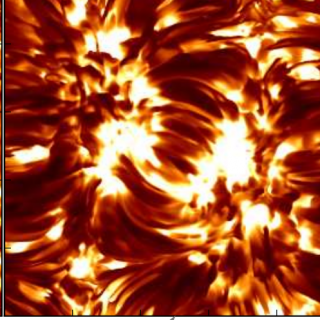Bibcode
Asensio Ramos, A.; Requerey, I. S.; Vitas, N.
Referencia bibliográfica
Astronomy and Astrophysics, Volume 604, id.A11, 9 pp.
Fecha de publicación:
7
2017
Revista
Número de citas
65
Número de citas referidas
63
Descripción
Many phenomena taking place in the solar photosphere are controlled by
plasma motions. Although the line-of-sight component of the velocity can
be estimated using the Doppler effect, we do not have direct
spectroscopic access to the components that are perpendicular to the
line of sight. These components are typically estimated using methods
based on local correlation tracking. We have designed DeepVel, an
end-to-end deep neural network that produces an estimation of the
velocity at every single pixel, every time step, and at three different
heights in the atmosphere from just two consecutive continuum images. We
confront DeepVel with local correlation tracking, pointing out that they
give very similar results in the time and spatially averaged cases. We
use the network to study the evolution in height of the horizontal
velocity field in fragmenting granules, supporting the buoyancy-braking
mechanism for the formation of integranular lanes in these granules. We
also show that DeepVel can capture very small vortices, so that we can
potentially expand the scaling cascade of vortices to very small sizes
and durations.
The movie attached to Fig. 3 is available at http://www.aanda.org
Proyectos relacionados

Magnestismo Solar y Estelar
Los campos magnéticos son uno de los ingredientes fundamentales en la formación de estrellas y su evolución. En el nacimiento de una estrella, los campos magnéticos llegan a frenar su rotación durante el colapso de la nube molecular, y en el fin de la vida de una estrella, el magnetismo puede ser clave en la forma en la que se pierden las capas
Tobías
Felipe García

Magnetismo, Polarización y Transferencia Radiativa en Astrofísica
Los campos magnéticos están presentes en todos los plasmas astrofísicos y controlan la mayor parte de la variabilidad que se observa en el Universo a escalas temporales intermedias. Se encuentran en estrellas, a lo largo de todo el diagrama de Hertzsprung-Russell, en galaxias, e incluso quizás en el medio intergaláctico. La polarización de la luz
Ernest
Alsina Ballester